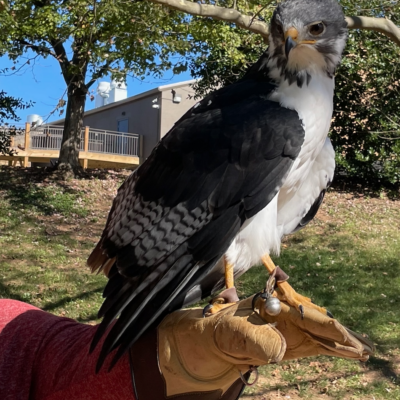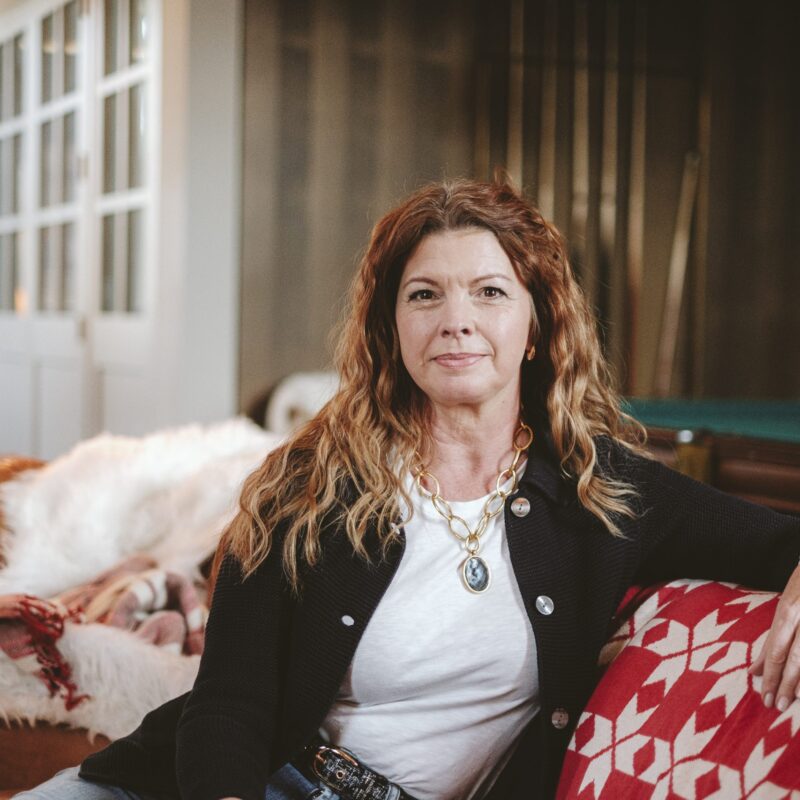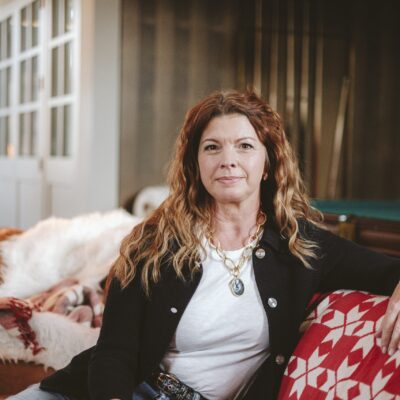I intended to speak with the artist Sally Gabori for this article, but was informed in a terse e-mail that she is not available for interviews. “Interviews need to be done in her Kayardild language and in person,” a manager wrote me from Mornington Island Art Center, in Queensland, Australia, where Gabori paints.
Given that there are fewer than 10 people who speak Kayardild, and Mornington Island is, give or take, 8,000 miles from Charlottesville, I had to settle for her art.
|
“My Father’s Country,” is one of several works by Sally Gabori currently on display at the Kluge-Ruhe Aboriginal Art Collection through December 19. The artist was born on an obscure island in 1924 and started painting with acrylics on canvas at an arts center in 2005—and has since become one of Australia’s most collectible artists. |
An astonishing, if small, collection of Gabori’s paintings opened late last month at the Kluge-Ruhe Aboriginal Art Collection. “Danda dulk ngijinda dulk: This land is my land,” shows mostly works from this year, and they register as erudite experiments in abstraction, like Rothko paintings folding into themselves. They are, in fact, evocative rendings of the traditions of her native Bentinck Island, from which Gabori and her family—including three sister wives—were evacuated in the 1940s.
For curator Margo Smith, who had recently returned from an indigenous art fair in Cairnes, Gabori’s work serves as a reminder of the simple idea that “there’s a person behind this art”—that works of Aboriginal art are not quaint bark paintings from a faraway people. Gabori’s work shows her “experimenting with contemporary forms, without being aware of the movements in the Western Art world.” That, Smith says, tends to “explode” consumers’ idea of modern art.
Though the task of carving a place for Aboriginal Art in the United States remains incomplete, the art world has taken note of Gabori. A lifelong practitioner of traditional crafts, she began painting after her 80th year when managers at the arts center in Mornington gave her access to acrylics and canvas; in the five years since, she has shown throughout Australia, as well as in London and Seoul. Australian Art Collector, a trade magazine, has twice called Gabori one of the 50 most collectable artists; many of Gabori’s works were fetching around $9,000AUS on the website of a Melbourne Gallery.
That such work came from a shy old woman from an obscure culture, who hardly speaks English, is “testament to the unpredictability of genius,” as a gallery catalogue aptly put it. In that, the show is also a fitting tribute to John Kluge, the billionaire entrepreneur and major UVA donor who passed away September 7, and who donated his collection of Aboriginal Art to UVA in 1997. Smith says that Kluge was always rooting for the underdogs of the art world, in particular by commissioning new works of Aboriginal art.
The Kluge-Ruhe has found itself a worthy underdog.
See Sally Gabori’s work through December 19 at 400 Worrell Dr., on Pantops, from 10am-4pm on Tuesday-Saturday, and 1-5pm on Sunday.
Do the Deuce
The Outback Lodge closed with more of a whimper than a bang, leaving lovers of extremely loud music out in the cold (and relative quiet). Deuces Lounge, the latest club at 917 Preston Ave., probably isn’t the answer to their prayers. What it is, according to new owner Jerome Cherry, is “a lot cleaner” after a couple months’ worth of renovations, “and very secure”—which I confirmed in a recent visit before its grand opening on September 10.
Look forward to DJs playing R&B upstairs and downstairs, Motown and bebop nights, local music and “just about every sandwich there is.” Yummy.






